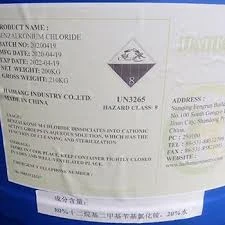poly aluminium chloride uses in water treatment
The Uses of Poly Aluminium Chloride in Water Treatment
Water is an essential resource for life, and its purity is paramount for human health and environmental sustainability. With increasing pollution levels and demands for clean water, efficient treatment methods have never been more crucial. One such effective chemical used in water treatment is Poly Aluminium Chloride (PAC), a versatile coagulant that plays a significant role in the purification of water. This article explores the uses, benefits, and applications of Poly Aluminium Chloride in water treatment processes.
What is Poly Aluminium Chloride?
Poly Aluminium Chloride is a chemical compound that consists of aluminium ions and chloride ions, and it is synthesized through the polymerization of aluminium salts. Typically available in both liquid and powdered forms, PAC shows exceptional efficiency in coagulation processes, which is essential for the removal of suspended particles, bacteria, and organic matter from water.
How Does PAC Work in Water Treatment?
The primary mechanism through which PAC operates is coagulation. When added to water, PAC hydrolyzes to form a range of aluminium hydroxides that attract and bind with suspended particles and colloids. This process leads to the formation of larger flocs, which can then settle more effectively, resulting in cleaner water. PAC is preferred over traditional coagulants like alum because of its ability to work effectively across a wide pH range. This flexibility allows for its use in different types of water, including surface water, groundwater, and even wastewater.
Applications of Poly Aluminium Chloride
1. Municipal Water Treatment One of the most common uses of PAC is in municipal water treatment facilities. It is used to remove impurities, color, and odors from drinking water, ensuring that it meets health and safety standards.
poly aluminium chloride uses in water treatment

2. Wastewater Treatment PAC is widely used in the treatment of industrial and municipal wastewater. Its ability to coagulate a variety of contaminants, including heavy metals and organic materials, makes it a preferred choice in treatment plants. This is crucial for minimizing environmental impact and adhering to regulatory standards.
3. Surface Water Treatment In areas where surface water is used for drinking or irrigation, PAC is effective in removing turbidity and pathogens. The coagulant helps in the clarification of water by binding with organic matter and other contaminants, making it safe for public consumption.
4. Paper and Pulp Industry PAC is also utilized in the paper and pulp industry as a retention aid and for the treatment of process water. By improving the retention of fibers and fillers, it enhances the quality of the final product while reducing pollution in the wastewater.
5. Food Processing In the food industry, PAC is used to ensure the quality of water used in production processes. It helps remove impurities that could affect the safety and taste of food products.
Advantages of Using PAC
The use of Poly Aluminium Chloride in water treatment comes with several advantages. Firstly, PAC is more efficient than traditional coagulants, often requiring lower doses to achieve desired results. This not only reduces chemical costs but also minimizes sludge production, leading to lower disposal costs. Secondly, PAC is effective over a wide range of temperatures and pH levels, making it adaptable for various water sources and conditions. Finally, the flocs produced by PAC are larger and settle more quickly, resulting in faster and more efficient filtration processes.
Conclusion
As the global demand for clean water continues to rise, the role of effective water treatment chemicals such as Poly Aluminium Chloride becomes increasingly significant. Its versatility, efficiency, and cost-effectiveness make PAC a preferred choice in various sectors, from municipal water treatment to industrial applications. By improving the quality of water, PAC not only safeguards public health but also contributes to environmental sustainability, making it an invaluable tool in addressing the challenges of water pollution and scarcity.
-
Water Treatment with Flocculant Water TreatmentNewsJun.12,2025
-
Polymaleic AnhydrideNewsJun.12,2025
-
Polyaspartic AcidNewsJun.12,2025
-
Enhance Industrial Processes with IsothiazolinonesNewsJun.12,2025
-
Enhance Industrial Processes with PBTCA SolutionsNewsJun.12,2025
-
Dodecyldimethylbenzylammonium Chloride SolutionsNewsJun.12,2025





